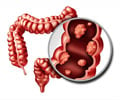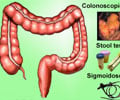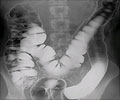More than 90% of the colorectal cancer cases discovered at age 50 were invasive, meaning they were likely lingering for some time before diagnosis.

‘A limitation of the study is its population-based design, which limited researchers' ability to determine exactly which patients had cancers detected at age 50 through screening versus diagnostic testing.’





Researchers found that almost 93% of the cases discovered at age 50 were invasive, meaning that most would require more aggressive treatment including surgery and were likely lingering for some time before diagnosis."Our findings suggest a high case burden of preclinical, undetected early onset colorectal cancers in patients younger than 50 that is not reflected in observed incidence rates," said lead study author Dr. Jordan Karlitz, associate clinical professor of Medicine at Tulane University School of Medicine and staff gastroenterologist at the Southeast Louisiana Veterans Health Care System.
Colorectal cancer is the second leading cause of cancer deaths in the United States. As rates for younger adults continue to rise, there is considerable debate about whether to lower the age for recommended screenings.
In 2018, the American Cancer Society called for routine screenings to start at 45. However, the U.S. Preventive Services Task Force, which sets federal screenings standards, currently recommends average risk screening begin at age 50. The agency is studying the issue to determine whether changes will improve outcomes Those against beginning screenings at age 45 have argued that incidence rates in those age 45 to 49 years have been considered relatively low compared to those aged 50 to 54 years.
Study authors suspected the risks for those in their mid-to-late 40s are underestimated because incident data for those age ranges would likely only include cases caught because they presented symptoms and/or have a family history of cancer, in contrast to those 50 and older who have cancers also detected due to screening.
Advertisement
Researchers found a steep increase from 34.9 diagnoses per 100,000 people at age 49 to 51 cases per 100,000 at age 50. Sharp increases were also seen in both men (52.9%) and women (39.1%), in white (46.2%) and black (47.3%) populations in colon (51.4%) and rectal (37.6%) cancers in this one-year age transition. These incidence increases from age 49 to 50 were not seen in prior studies because only age group ranges were analyzed.
Advertisement
The study adds fuel to the debate about whether screenings should begin at age 45. Karlitz said the combined burden of undetected and detected early onset colorectal cancer cases for those 45-49 may actually approach that of individuals in their early 50s.
"Our data support that the incidence of colorectal cancer increases substantially among individuals in their early 50s compared with individuals in their late 40s, not because rates are truly lower among those aged 45 to 49 years, but because colorectal cancers are present but undetected until diagnosed when screening is ultimately initiated," he said.
A limitation of the study is its population-based design, which limited researchers’ ability to determine exactly which patients had cancers detected at age 50 through screening versus diagnostic testing.
"Nevertheless, the significantly high rate of invasive cases supports that almost all cancers accounted for in the rate increase from age 49 to 50 required aggressive treatment, regardless of how they were detected," Karlitz said.
Source-Eurekalert















